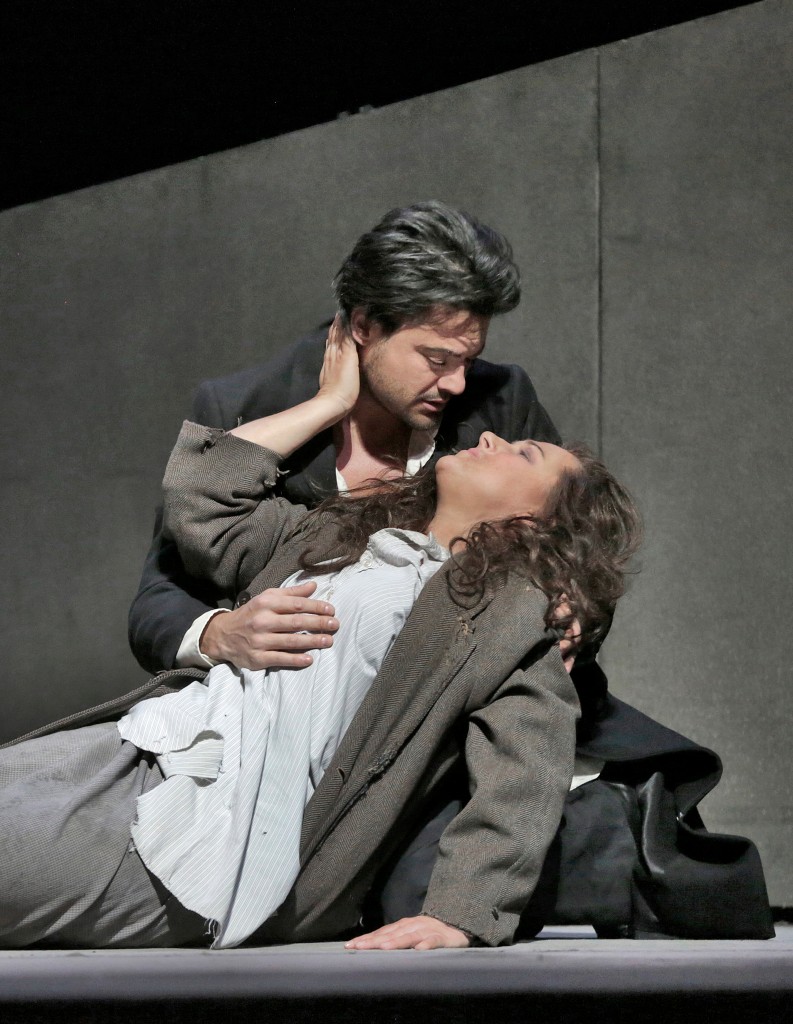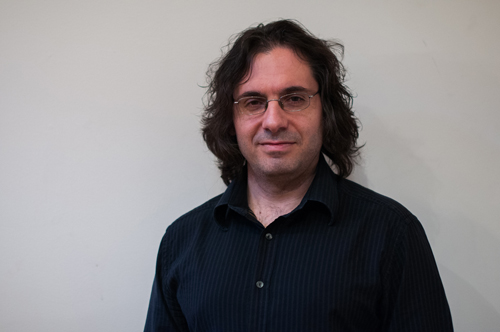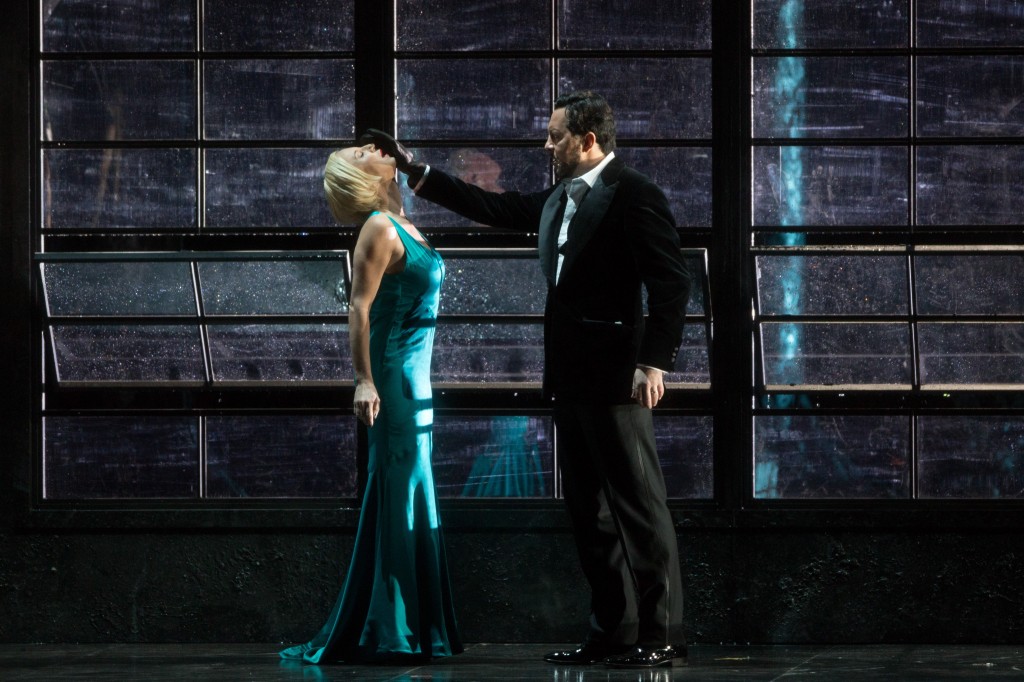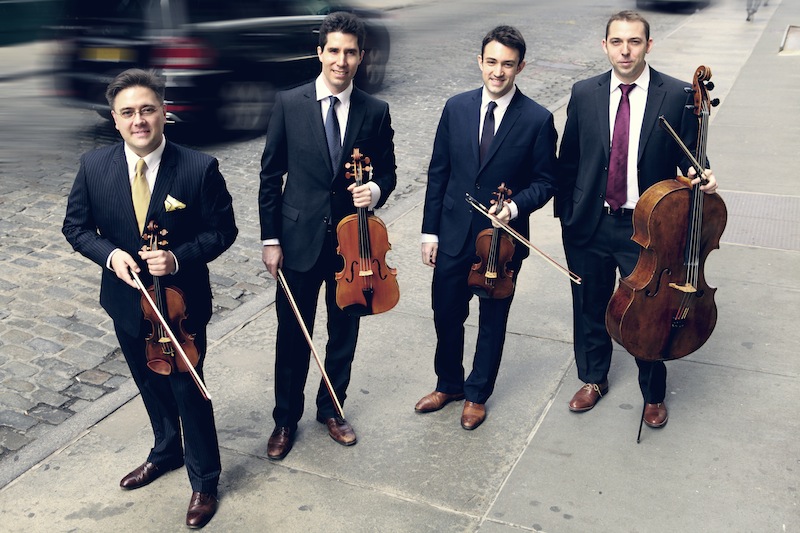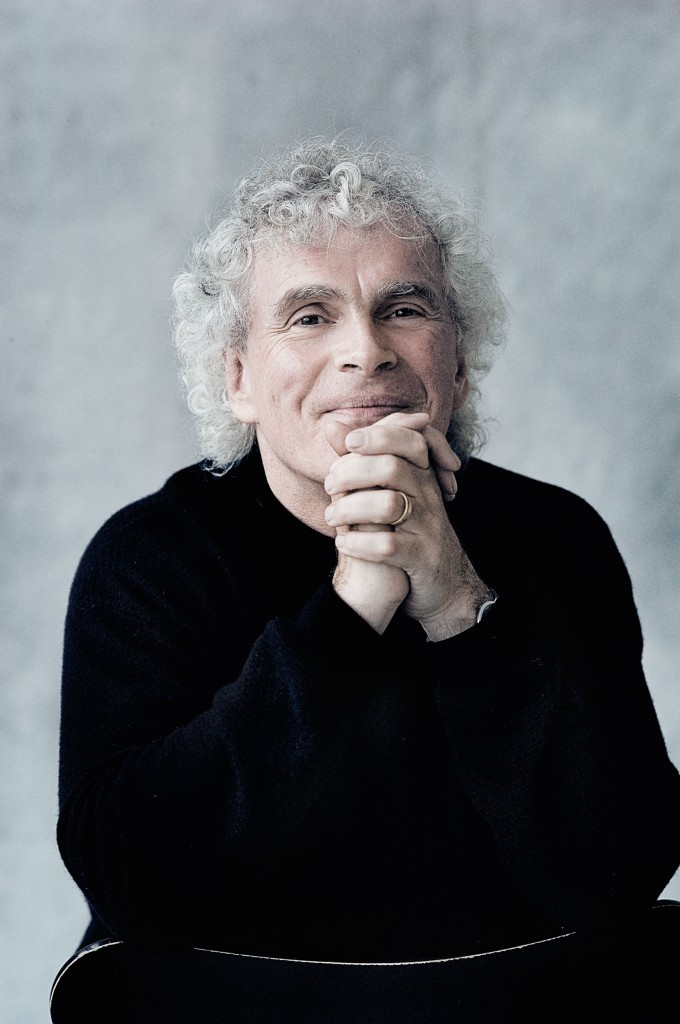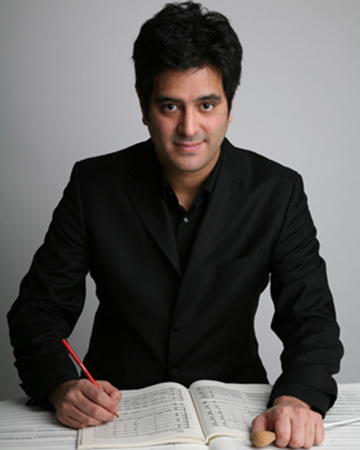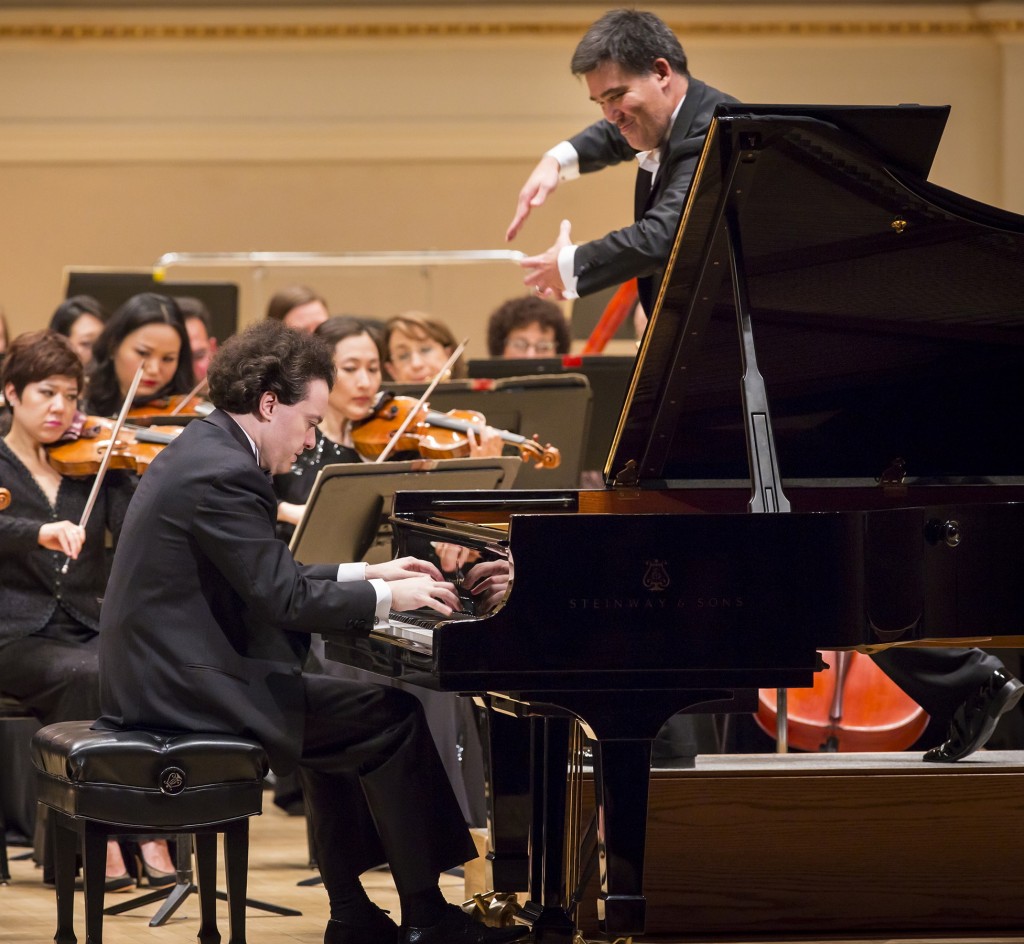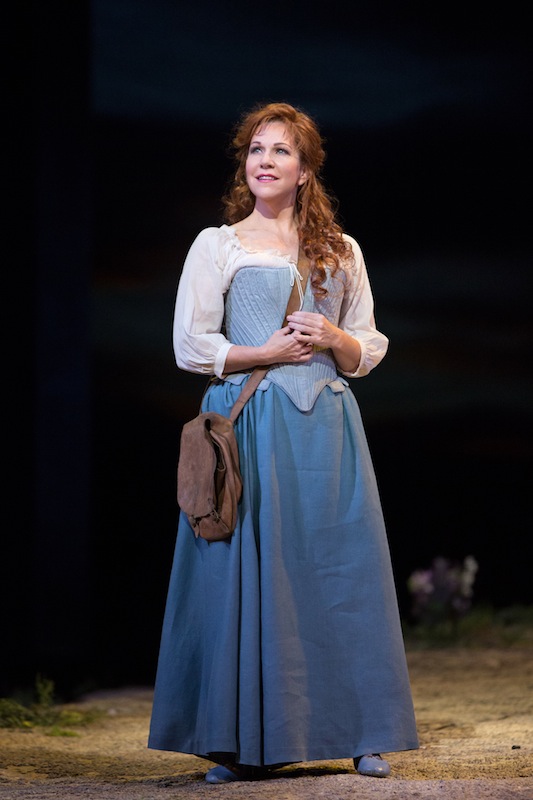Top Ten Performances of 2015
1. R. Andrew Lee recital at Spectrum
Reading the various reviews of the Maria Abramović/Igor Levit’s Goldberg production at the Park Avenue Armory, the most consistent idea expressed is that listening to great music requires some sort of separation from the regular world. That’s a matter of personal values, not objective truth. The experience of great music can be powerfully enhanced by—or music can be made great in no small part due to—the experience of the real world.
Pianist R. Andrew Lee’s program of Schubert and new music by Michael Vincent Waller, Leah Kardos, Adrian Knight, and Galen H. Brown was already as strong and luminous as polished steel. But his simple acknowledgement of the June 17 massacre at the Emanuel A.M.E. Church in Charleston, meant that the beauty of Knight’s Abide With Me and the visceral, frightening brilliance of Brown’s God is a Killer, bore witness to real world experience. And so excellent music became great art. (GG)
2. Massenet’s Manon at the Metropolitan Opera
Laurent Pelly’s production of Massenet’s tragic romance seemed stale even at its 2012 debut, but a cast led by Diana Damrau and Vittorio Grigolo made it the Met’s most thrilling night of 2015. The two gave unforgettable performances as the opera’s leading couple, producing a heart-racing experience from start to finish. Here’s hoping this emotional evening will go some way towards gaining Massenet’s devastating masterpiece the respect it has always deserved but never quite achieved. (ES)
3. Agustus Arnone playing Michael Finnissy
There are fashions and vogues for modern music just like everything else, but that there is plenty of worthwhile music that never comes into fashion. Michael Finnissy has unfortunately not yet come into fashion in New York, but Arnone’s superb playing of mind-bendingly complex and compelling music like The History of Photography Through Sound might, hopefully, be an essential first step toward making that happen. (GG)
4. Bartók’s Duke Bluebeard’s Castle at the Metropolitan Opera
A pairing of Tchaikovsky’s Iolanta and Bartók’s Duke Bluebeard’s Castle was probably always destined to be a little bottom-heavy, given the musical disparity between the two pieces. But the new Bluebeard staging by Mariusz Treliński far outshone its lighter pairing; in fact, it outshone any other new production of the year. Treliński’s chilling realization of Bartók’s dark masterpiece was one of the most psychologically intense creations the Met has ever seen–if the director’s season-opening Tristan und Isolde next year matches this standard, it will be one of the can’t-miss events of the season. (ES)
5. Chamber Music Society of Lincoln Center. The Escher Quartet playing Zemlinsky
Alexander Zemlinsky is no one’s (except for perhaps a small partisan cadre) idea of a great composer. But when a group like the Escher Quartet plays with such musical brilliance, with such thought, meaning and expressive and technical command, in the temporary duration of their performance the music is great. This was one of the greatest single concerts of the year. (GG)
6. Simon Rattle and the Berlin Philharmonic Orchestra: Beethoven’s “Eroica”
We expect the combination of Berlin and Beethoven to be a great one–sometimes to the point that anything that fails to match our elevated standards comes as a disappointment. Performing the “Eroica” Symphony on the first night of their week-long Beethoven binge at Carnegie Hall, Sir Simon Rattle and the BPO set the bar even higher for the four evenings following, giving a performance that was truly phenomenal. There was nothing especially unusual about Rattle’s interpretation, but the execution was superb, a level of playing that gave the sense that this is how Beethoven was always meant to sound. (ES)
7. The Argento Ensemble playing Mahler’s Das Lied von der Erde
The Argento’s 2014–15 series “Mahler as New York Contemporary,” was already an ideal of classical music programming: renewing older music and connecting new music to a long historical tradition. But this concert was special. Playing the revised version by conductor Michel Galante (above) of the Das Lied chamber reduction, Argento and singers James Benjamin Rodgers and Jennifer Beattie delivered the music with a relish, excitement, and sense of discovery that is rare in classical concerts. (GG)
8. Evgeny Kissin with Alan Gilbert and the New York Philharmonic at Carnegie Hall’s Opening Night
On opening nights at the major concert halls, a really excellent performance is often too much to hope for–a splashy experience for elite donors tends to take priority over artistic vigor. Carnegie Hall’s first item of the season this year was more than a pleasant surprise: Evgeny Kissin gave a rendition of Tchaikovsky’s Piano Concerto No. 1 for the ages, and the New York Philharmonic turned in some of their very best work under Alan Gilbert in Ravel’s Daphnis et Chloé Suite No. 2. All this, and the premiere of Magnus Lindberg’s intriguing Vivo, the first fruit of what promises to be a rewarding five-year commissioning program at Carnegie Hall. (ES)
9. Ensemble Musikfabrik playing Harry Partch’s Delusion of the Fury
The loss of New York City Opera and Gotham Chamber Opera, coupled with the Metropolitan Opera’s retreat to some of the most common entries in the standard repertoire, have made for a safe and rather dull opera season. Harry Partch’s music is never safe nor dull, and despite being so outside the norm of the standard classical experience, it communicates with ease and an earthy, humane directness. In the operatic doldrums, it’s good to remember the intelligence and wit of Heiner Goebbels’ production of Partch’s Delusion of the Fury at the Lincoln Center Festival, Thomas Meixner’s inspiring dedication in building beautiful new versions of Partch’s instruments, and for how well the music was played—a new standard in Partch performances. (GG)
10. Rossini’s La Donna del Lago at the Metropolitan Opera
Though perhaps the least creative staging to see the Met’s stage since the late Luc Bondy’s 2009 Tosca, the company’s first ever crack at Rossini’s Donna del Lago, directed by Paul Curran, featured performances over two runs in 2015 that will be hard to top if we should be lucky enough to hear the opera again in future seasons. Joyce DiDonato was more than up to the challenge of carrying the star vehicle, demonstrating in her vocal wizardry why she is this country’s most sought-after mezzo-soprano. The second run in December was particularly exceptional, including high-octane vocal duels between tenors John Osborn and Lawrence Brownlee. Michele Mariotti came into his own as he spent more time with this opera, showing a tremendous affinity for the bel canto style. (ES)
_____________
Honorable Mentions
Marion Cotillard captivated audiences with her performance of Arthur Honegger’s Jeane d’Arc au Bûcher, presented by the New York Philharmonic. At Subculture, counter)induction celebrated George Crumb’s eighty-fifth birthday with quirky wit. William Kentridge gave the Met another cerebral tour-de-force with Berg’s Lulu. The Chamber Music Society of Lincoln Center capped one of the most peculiar programs of the year with a brilliant argument for Kreisler’s String Quartet. And Yannick Nézet-Séguin twice showed his Verdian mettle, giving powerful readings of Otello and Don Carlo at the Met. (ES)
The Beethoven Fifth served up by Simon Rattle and the Berlin Philharmonic Orchestra at Carnegie Hall was riveting and unforgettable, the finest of hundreds of Fifths heard over my lifetime. Magnificently played with a life-and-death intensity. (Lawrence A. Johnson)
Anne-Sophie Mutter was a real star, with thrilling performances of the violin concertos of Sibelius, Berg, and Norbert Moret. The latter two were part of a concert by the New World Symphony and Michael Tilson Thomas, which delivered the best orchestral playing of the year. (GG)
Julian Wachner and the collected forces of Trinity Wall Street delivered a powerful and beautiful Ives’ Fourth Symphony at Carnegie Hall in February. (GG)
Daniele Gatti’s insightful, wonderfully musical interpretations of Brahms Symphonies 2 and 4 with the Vienna Philharmonic, at Carnegie Hall at the end of February. (GG)
Ian Bostridge was startlingly, subversively expressive at his recital of songs of war at the Park Avenue Armory, in April. (GG)
It’s hard to believe that, with James Levine, the MET Orchestra, Paul Appleby and Gerald Finley, the Metropolitan Opera could only mount three performances of Stravinsky’s The Rake’s Progress, but as it is one of the greatest operas made, there is thanks, at least, that some people could witness it. (GG)
The single finest opera performance of the year, again at the Met, was Peter Mattei’s Wolfram in Tannhäuser. The pure beauty and musicality of his singing did more to express character, meaning, and drama, than hours of furrowed brows and hand waving. (GG)
Finally, though not reviewed here, the most fun at a musical performance this year was taking my five-year-old daughter to Orli Shaham’s excellent Baby Got Bach series, where kids not only get to make music, but in this instance enjoyed a neat little concert of masterpieces from Bach, Astor Piazzolla, and Steve Reich. The little sophisticates … (GG)
Topsy-turvy
Iolanta and Bluebeard weren’t the only lopsided pairing at the Met in 2015. David McVicar’s fresh take on the classic “Cav & Pag” combo gave the Metropolitan Opera a superb new staging of Leoncavallo’s Pagliacci. If only it could be divorced from the grueling Cavalleria Rusticana that preceded it. (ES)
We hardly knew ye
It didn’t take long for Subculture to establish itself as one of New York’s most exciting alternative concert venues. In just a few short years, the basement cabaret presented recitals by leading chamber groups and carved out a significant role in the contemporary music scene, through collaborations with the NY Phil Biennial and other projects. Financial problems have forced the organization to cancel almost all of its 2015-16 season; the loss so soon of what looked like such a vibrant project would be disheartening, to say the least. (ES)
Pinch-hitter of the year
Covering a leading role at the Met is always a major responsibility; to do so at a season premiere, with the house (hopefully) full and the press corps in attendance, is both a challenge and an opportunity. Mireille Asselin, filling in for Lucy Crowe as Adele in Die Fledermaus, was undaunted, giving one of the most enchanting performances of 2015. We hope the Met will get into the habit of giving her notice a little further in advance. (ES)

